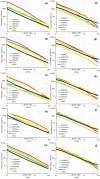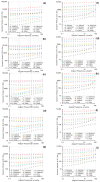The Development and Optimization of Extrusion-Based 3D Food Printing Inks Using Composite Starch Gels Enriched with Various Proteins and Hydrocolloids
- PMID: 40868705
- PMCID: PMC12385182
- DOI: 10.3390/gels11080574
The Development and Optimization of Extrusion-Based 3D Food Printing Inks Using Composite Starch Gels Enriched with Various Proteins and Hydrocolloids
Abstract
This study presents a comprehensive evaluation of starch-based gel formulations enriched with proteins and hydrocolloids for extrusion-based 3D food printing (3DFP). Food inks were prepared using corn or potato starch, protein concentrates (fava, whey, rice, pea and soya), and hydrocolloids (κ-carrageenan, arabic gum, xanthan gum, and carboxy methylcellulose). Their rheological, mechanical, and textural properties were systematically analyzed to assess printability. Among all formulations, those containing κ-carrageenan consistently demonstrated superior viscoelastic behavior (G' > 4000 Pa), optimal tan δ values (0.096-0.169), and yield stress conducive to stable extrusion. These inks also achieved high structural fidelity (93-96% accuracy) and favourable textural attributes such as increased hardness and chewiness. Computational Fluid Dynamics (CFD) simulations further validated the inks' performances by linking pressure and velocity profiles with rheological parameters. FTIR analysis revealed that gel strengthening was primarily driven by non-covalent interactions, such as hydrogen bonding and electrostatic effects. The integration of empirical measurements and simulation provided a robust framework for evaluating and optimizing printable food gels. These findings contribute to the advancement of personalized and functional 3D-printed foods through data-driven formulation design.
Keywords: 3D food printing; composite starch gels; computational fluid dynamics; printability.
Conflict of interest statement
The authors declare no conflicts of interest.
Figures









References
-
- Eswaran H., Ponnuswamy R.D., Kannapan R.P. Perspective Approaches of 3D Printed Stuffs for Personalized Nutrition: A Comprehensive Review. Ann. 3D Print. Med. 2023;12:100125. doi: 10.1016/j.stlm.2023.100125. - DOI
-
- Mandala I.G., Apostolidis E. Handbook of Plant-Based Food and Drinks Design. Academic Press; Cambridge, MA, USA: 2024. Physical Processing: Dry Fractionation and Texturization of Plant Proteins; pp. 89–101. - DOI
Grants and funding
LinkOut - more resources
Full Text Sources
Miscellaneous

